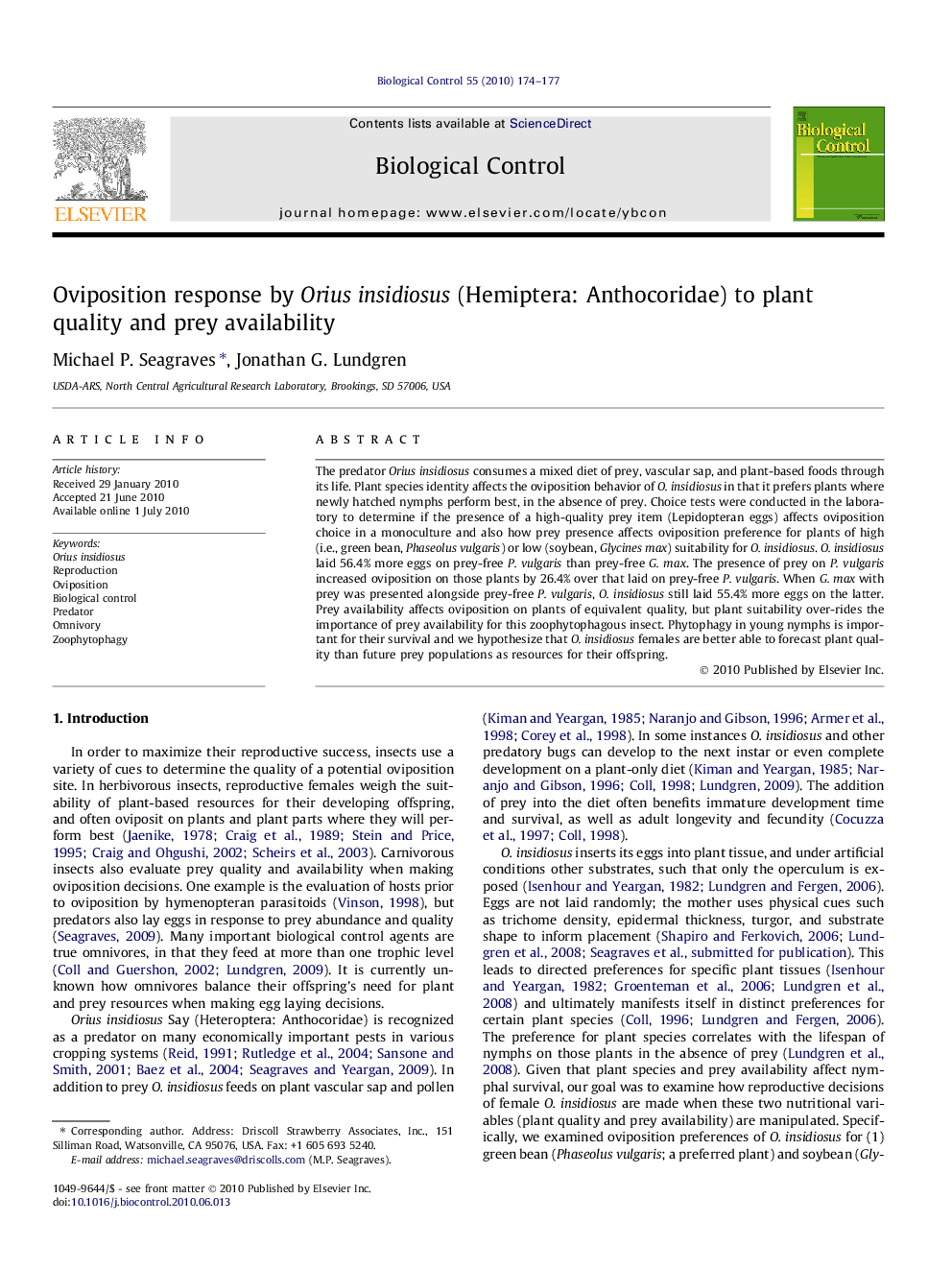| Article ID | Journal | Published Year | Pages | File Type |
|---|---|---|---|---|
| 4504455 | Biological Control | 2010 | 4 Pages |
Abstract
The predator Orius insidiosus consumes a mixed diet of prey, vascular sap, and plant-based foods through its life. Plant species identity affects the oviposition behavior of O. insidiosus in that it prefers plants where newly hatched nymphs perform best, in the absence of prey. Choice tests were conducted in the laboratory to determine if the presence of a high-quality prey item (Lepidopteran eggs) affects oviposition choice in a monoculture and also how prey presence affects oviposition preference for plants of high (i.e., green bean, Phaseolus vulgaris) or low (soybean, Glycines max) suitability for O. insidiosus. O. insidiosus laid 56.4% more eggs on prey-free P. vulgaris than prey-free G. max. The presence of prey on P. vulgaris increased oviposition on those plants by 26.4% over that laid on prey-free P. vulgaris. When G. max with prey was presented alongside prey-free P. vulgaris, O. insidiosus still laid 55.4% more eggs on the latter. Prey availability affects oviposition on plants of equivalent quality, but plant suitability over-rides the importance of prey availability for this zoophytophagous insect. Phytophagy in young nymphs is important for their survival and we hypothesize that O. insidiosus females are better able to forecast plant quality than future prey populations as resources for their offspring.
Related Topics
Life Sciences
Agricultural and Biological Sciences
Agronomy and Crop Science
Authors
Michael P. Seagraves, Jonathan G. Lundgren,
